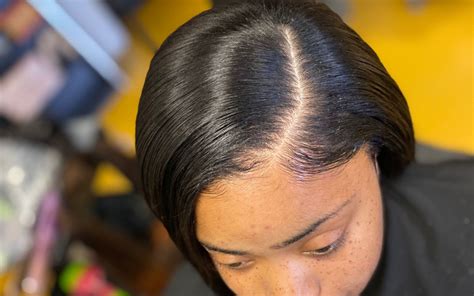When it comes to creating stunning braided hairstyles, the right hair extensions can make all the difference. If you’re looking for the perfect braiding hair to elevate your creations, this comprehensive guide will provide you with everything you need to know about the 4 types of braiding hair available today.

1. Kanekalon Braiding Hair
- Affordability: One of the most affordable braiding hair options available.
- Variety: Comes in a wide range of colors, lengths, and textures.
- Ease of Use: Easy to braid and style, making it suitable for beginners.
- Heat Resistance: Can withstand heat up to 400°F, allowing for heat styling.
2. Toyokalon Braiding Hair
- Higher Quality: Made from a higher-quality synthetic fiber than Kanekalon.
- Natural Appearance: Provides a more natural look and feel compared to other synthetic braiding hair.
- Durability: Lasts longer and retains its shape better than Kanekalon hair.
- Heat Resistance: Can withstand heat up to 350°F, suitable for light heat styling.
3. Premium Braiding Hair
- Exceptional Quality: The highest-quality synthetic braiding hair available.
- Virgin Quality: Made from 100% premium fibers, ensuring a natural look and feel.
- Long-Lasting: Can last up to 6 weeks with proper care and maintenance.
- Heat Resistance: Can withstand heat up to 450°F, allowing for versatile styling options.
4. Human Hair Braiding Hair
- Natural Appearance: Provides the most natural look and feel of all braiding hair options.
- High Quality: Made from real human hair, ensuring durability and a healthy scalp.
- Customization: Can be colored, heat-styled, and treated like natural hair.
- Expense: The most expensive braiding hair option, but offers the best overall quality.
Consider the following factors when selecting braiding hair:
- Style: Determine the type of braids you plan to create and choose hair that suits the desired look.
- Texture: Match the texture of your natural hair to ensure a seamless blend.
- Color: Select a color that complements your skin tone and personal style.
- Budget: Consider the cost of the braiding hair and factor it into your decision.
Follow these tips for successful braiding:
- Prepare your hair: Shampoo and condition your hair to remove any dirt or oils.
- Detangle: Brush or comb your hair thoroughly to remove any tangles.
- Use a braiding gel: Apply a braiding gel to your hair to create hold and prevent frizz.
- Section your hair: Divide your hair into smaller sections for easier braiding.
- Start small: Begin by braiding small sections of hair and gradually increase the size as you become more comfortable.
- Secure the braids: Use hair ties or clips to secure the braids in place.
- Experiment: Try different braiding techniques, such as Dutch braids, fishtail braids, and French braids, to create unique looks.
1. How long can braiding hair last?
The lifespan of braiding hair varies depending on the type, care, and maintenance it receives. Kanekalon hair typically lasts for a few weeks, while premium braiding hair and human hair can last up to 6 weeks or longer.
2. Can I wash and style braiding hair?
Yes, you can wash and style synthetic braiding hair using gentle shampoos and conditioners. However, avoid harsh chemicals and excessive heat styling. Human hair braiding hair can be washed, styled, and treated like natural hair.
3. How often should I take breaks from braiding hair?
It’s recommended to take breaks from braiding hair every 4-6 weeks to give your scalp and hair time to rest and recover. This helps prevent damage and promotes healthy hair growth.
4. Can braiding hair damage my hair?
If done incorrectly or too tightly, braiding hair can put stress on your hair and lead to breakage. Avoid braiding your hair too tightly and use a braiding gel to protect your hair.
5. How can I remove braiding hair?
To remove braiding hair, gently cut the braiding hair close to the scalp and then soak your hair in warm water. Use a detangler or conditioner to help loosen the braids. Carefully comb through your hair to remove any remaining extensions.
6. Can I braid my own hair?
Yes, you can braid your own hair using various techniques. Practice and patience are key to achieving professional-looking braids. There are numerous online tutorials and resources available to guide you through the process.
7. What are some creative applications for braiding hair?
Beyond traditional braiding, braiding hair can be used to create a multitude of artistic and functional applications. It can be incorporated into jewelry, accessories, home décor, and even as a material for sculptures and installations.
8. Is there a sustainable alternative to synthetic braiding hair?
Yes, there are sustainable alternatives to synthetic braiding hair, such as wool, alpaca fiber, and jute. These natural fibers are biodegradable and environmentally friendly, making them a more eco-conscious choice for braiding and hair extensions.
